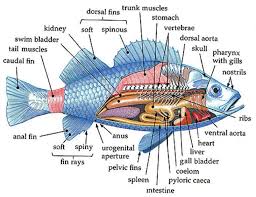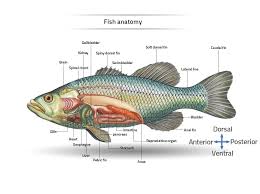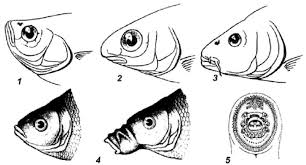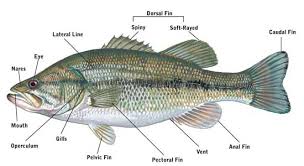Fish identification is essential to ensure that a species with different traits is not mistakenly used for an intended purpose, as this can lead to errors in its utilization. A particular fish species may be required for consumption, research, practical training, or production.
While two species belonging to the same family may appear similar, they often possess significant differences, making fish identification at the species level crucial. This necessitates understanding the procedures and tools involved in identifying fish correctly.
A basic knowledge of fish anatomy is important for accurate identification, especially when distinguishing species through features such as mouth orientation, finnage, and coloration. In cases involving subspecies or hybrids, the expertise of a professional may be required. Further details on these aspects will be discussed in this article.
Understanding Fish Identification
Fish identification involves recognizing external and internal features, categorized as meristic and biometric characteristics. Identifying fish becomes easier when one is familiar with the common and unique features among species, particularly well-known fish such as game fish.
What Are Meristic Characteristics?
Meristic characteristics refer to countable features of fish, both internal and external, such as fins, gills, mouth, and teeth structure. Scientists and fishkeepers rely on these characteristics to identify different species. Meristic features include variations in the number of fins, scales, fin rays, and barbels.
These characteristics can be cross-referenced with descriptions in books and dichotomous keys to determine the species. Meristics are often combined with anatomical details and measurements of specific features, known as morphometrics.
Basic Rules of Meristic Features

Meristics, at their core, involve counting fins, fin rays, or scales. There are various features to count, and methods can differ in counting and presenting these features. A key rule in meristic features is that the number is always a whole number. For example, fish generally have whole numbers of fins, rays, and scales, not fractions.
Internal Features of Fish
Internal features, such as the gill raker, play a critical role in fish identification. Gill rakers, comb-like structures found inside the gill arches, vary in number and shape among fish species. They serve functions such as protecting fragile gill filaments and aiding in filtering minute food particles from water.
Fish with numerous fine gill rakers, such as microphagous species, feed on small particles like plankton, while macrophagous species with fewer, stronger gill rakers feed on larger food items. The gill rakers are protected by the opercular plate, a hard disc-like structure that is part of the fish’s body.
External Features of Fish
External features, including fins, mouth, teeth, scales, body shape, and color, are crucial for identifying fish species.
Why Is Counting Features Difficult?
Counting fish features can be challenging due to varying interpretations of what constitutes a particular fin ray or scale. Specialists in different fish groups may use slightly different methods of counting. For example, those working on Lake Victoria cichlids follow specific techniques recommended by Barel, a cichlid expert.
Read Also: Bird of Paradise Flower (Strelitzia reginae): All You Need To Know About
How to Count Features in Fish

Meristic studies are often conducted on fish that have been preserved, making it easier to count features like scales and fin rays. In live fish, counting features such as scales along the flank can be tricky, and photographs of the fish are often used for accuracy. Fin rays, for example, can be soft, hard, or spinous, each counted separately. Specialized shorthand is used to describe fin structures, with letters and numerals representing different fin types and counts.
A. Scales in Fish
Fish scales vary in type, and the presence of scales serves as external protection. The most common types of scales include cycloid, ctenoid, ganoid, and placoid scales. Each type has its own shape and structure, which can aid in identifying fish species.
1. Cycloid scales: These are small, oval-shaped scales with smooth surfaces found in species like Hepsetus odoe and Heterotis niloticus.
2. Ctenoid scales: These resemble cycloid scales but have spines on one edge, giving the fish a rough texture. Found in species like Ctenopoma kingsleyae.
3. Ganoid scales: These are diamond-shaped, thick scales that offer significant protection, seen in Polypterus spp.
4. Placoid scales: Found in sharks, these scales resemble teeth and provide a tough, durable surface.
Read Also: General Management Considerations in Livestock Management
B. Mouth Types in Fish

The structure and position of a fish’s mouth can also help identify species, as it is related to feeding habits. Fish mouths are classified as superior, inferior, or terminal, and some species have protrusible mouths that can extend during feeding.
1. Superior Mouth: Positioned above the snout, found in surface-feeding species like Epiplatys sexfasciatus.
2. Inferior Mouth: Positioned below the snout, common in bottom-feeders like Clarias gariepinus.
3. Terminal Mouth: Located at the tip of the snout, seen in predatory species like Hydrocynus brevis.
4. Protrusible Mouth: Can be extended outward during feeding, found in species like Lates niloticus.
C. Lateral Line in Fish
The lateral line is a sensory organ in fish, running along the flank and detecting vibrations in the water. Some species, such as Protopterus annectens, have a continuous lateral line, while others, like Barbus callipterus, have a discontinuous lateral line. Certain species also have secondary lateral lines, which may be regular or irregular in distribution.
D. Teeth in Fish
Teeth are important for fish classification, with fish generally having homodont dentition (same type of teeth throughout). However, differences exist in the number of cusps and types of teeth, such as canine, incisor, molar, and villiform (villi or granular structures).
Teeth may also differ in their positioning within the mouth, such as premaxillary (front of upper jaw), maxillary (sides of upper jaw), mandibular (sides of lower jaw), and vomerine (back of the mouth).
Biometric Characteristics in Fish
Biometric characteristics involve measuring specific parts of the fish’s body for identification purposes. These measurements can include the length of fins, total body length, or head-to-body ratio. These variations are often species-specific and aid in distinguishing different fish species. Common biometric terms include total length, fork length, and standard length.
Do you have any questions, suggestions, or contributions? If so, please feel free to use the comment box below to share your thoughts. We also encourage you to kindly share this information with others who might benefit from it. Since we can’t reach everyone at once, we truly appreciate your help in spreading the word. Thank you so much for your support and for sharing!
Read Also: What is some advantages of solar energy?

